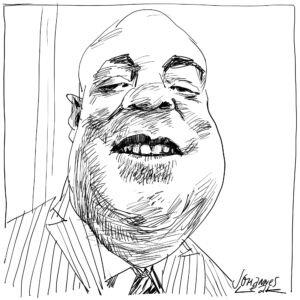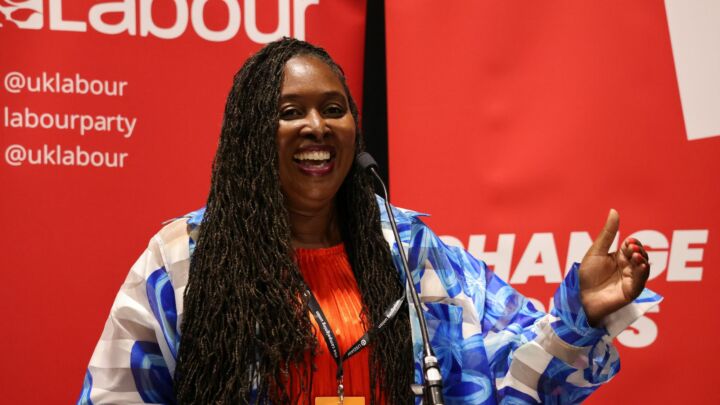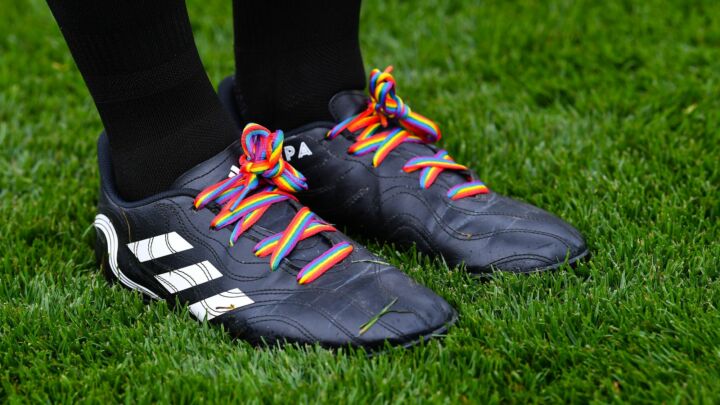There’s nothing racist about ending affirmative action
The US Supreme Court has put an end to a genuine form of 'systemic racism'.

Want to read spiked ad-free? Become a spiked supporter.
Race-based affirmative action, in US colleges at least, is over.
At the end of last week, the Supreme Court ruled that race cannot be used as a weighting factor in the collegiate admissions process. This brings an end to the era when an Asian applicant would need a far higher score to get into Harvard than a black applicant.
The Supreme Court case centred on the affirmative-action policies of Harvard University and the University of North Carolina (UNC). But the court’s judgement will also affect the more than 40 per cent of US universities that currently take race into account in admissions. In his majority opinion, Chief Justice John Roberts said that UNC’s and Harvard’s affirmative-action programmes ‘lack sufficiently focussed and measurable objectives warranting the use of race, unavoidably employ race in a negative manner, involve racial stereotyping, and lack meaningful endpoints’.
It was a blunt verdict, and one from which Ketanji Brown Jackson and Sonia Sotomayor dissented in almost histrionic terms. According to Sotomayor, ‘The majority’s vision of race neutrality will entrench racial segregation in higher education’. For Brown Jackson, this was a ‘tragedy’ that would ‘impede [the] achievement of our great nation’s full potential’. However, all data indicate that a substantial majority of Americans would agree with Roberts’ take. Critics of the ruling may try to denigrate it as furthering the cause of ‘racism’ or ‘white supremacy’. But that’s hard to maintain when the case against Harvard and UNC was brought by Students for Fair Admissions – a group composed entirely of East and South Asian plaintiffs.
The demographics of those involved in Students for Fair Admissions will come as no surprise to many. After all, the US is no longer a majority white country with one large black minority. We are now a wildly diverse place. Hispanics are the largest minority group in the US, making up 18 per cent of the national population. Black Americans make up 12 per cent, and Asian Americans now comprise about seven per cent. Asian Americans outperform every other racial group on the SAT, the most widely used test for college admissions, by literally hundreds of points. Asian Americans score nearly 1,250 on average, with whites getting about 1,100 and Hispanics and blacks reaching roughly 950. As a result, affirmative-action policies have been hitting young Asian scholars the hardest.
In truth, the Supreme Court’s ruling had been a long time coming. Pro-black affirmative action had been making less and less sense over the past two or three decades. It hadn’t been plucking impoverished black kids from housing projects and sending them on to Cornell or the University of Michigan, as many seemed to imagine. It had actually been benefitting already wealthy and highly educated black immigrants, who (counting second-generation migrants) make up more than 20 per cent of America’s black population. Their children, combined with those of biracial couples, make up nearly two-thirds of all black students enrolled at universities like Harvard.
Very few of these striving young lordlings are actually poor or ‘oppressed’. As respected black scholar Anthony Abraham Jack pointed out in his book, The Privileged Poor, about 70 per cent of Ivy League enrollees, across all races, come from families in the top 20 per cent of earners in the US. Affirmative action in practice often involved the well-fed son of a Jamaican American or Colombian American dentist being given a 300-point test-score advantage over the daughter of a Vietnamese immigrant shopkeeper. In the end, the Supreme Court rightly ruled that this system was impossible to logically or ethically justify.
Of course, no single court case can resolve every aspect of a social or even legal problem. And a few big questions remain. The first and most obvious is whether colleges and universities will simply duck the impact of this decision by cheating.
Justice Roberts himself outlined a major potential loophole in his majority opinion. He noted that any individual student could opt to discuss how race or racism affected his or her life during the application-essay process. It is not difficult to imagine universities allowing or encouraging this at scale, and using a metric like ‘experience with suffering’ as a proxy for racial-minority status. To be sure, Roberts told schools that they are not supposed to do this, but that probably won’t stop them.
An even simpler way for educational institutions to disobey the spirit of this ruling would be simply to drop standardised tests as an admissions metric. Some well known affirmative-action critics, like Kenny Xu of Color Us United, doubt this will happen. They say that colleges will still need some way to measure academic ability.
Perhaps. But it’s worth remembering that the entire University of California system – which includes some highly competitive schools, like UC Berkeley and UCLA – stopped requiring applicants to take the SAT or the ACT, another common standardised test, three years ago. The tests were replaced, at least in terms of emphasis, with class- and race-signalling tools, like letters of reference. So it has happened.
This move against affirmative-action policies should also raise questions about other aspects of the US college-admissions process that favour young people on grounds other than academic merit. In 2019, a study published by the National Bureau of Economic Research found that roughly 45 per cent of all white Harvard students were ‘recruited athletes, legacy students, children of faculty and staff, or on the dean’s interest list’ – that is, applicants whose parents or relatives have donated to Harvard.
That is quite typical across the university sector. If we are serious about creating a genuinely meritocratic admissions process, it will require more than getting rid of the one academic double-standard focussed on advantaging minority kids. So let us hope that those Harvard slots once allotted to under-the-bar people of colour do now go to the best Asian, or Indian, or working-class white applicants in the land – and not to rich and connected sub-par candidates instead.
Still, the Supreme Court ruling against affirmative action is a positive change. As of last Thursday, Asian students cannot be treated differently from black or white students with the same test scores and grades, solely because of their race. The term ‘systemic racism’ is almost invariably useless, but it does seem as if one real form of this practice has just been defeated.
Wilfred Reilly is a spiked columnist and the author of Taboo: 10 Facts You Can’t Talk About, published by Regnery. Follow him on Twitter: @wil_da_beast630
Picture by: Getty.
Celebrate 25 years of spiked!
A media ecosystem dominated by a handful of billionaire owners, bad actors spreading disinformation online and the rich and powerful trying to stop us publishing stories. But we have you on our side. help to fund our journalism and those who choose All-access digital enjoy exclusive extras:
- Unlimited articles in our app and ad-free reading on all devices
- Exclusive newsletter and far fewer asks for support
- Full access to the Guardian Feast app
If you can, please support us on a monthly basis and make a big impact in support of open, independent journalism. Thank you.








Comments
Want to join the conversation?
Only spiked supporters and patrons, who donate regularly to us, can comment on our articles.